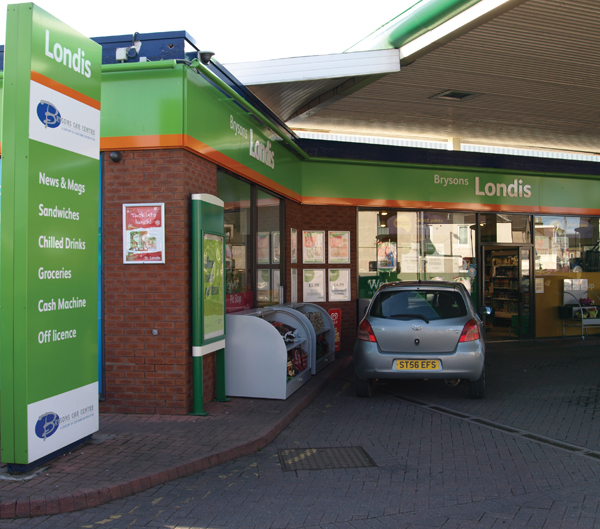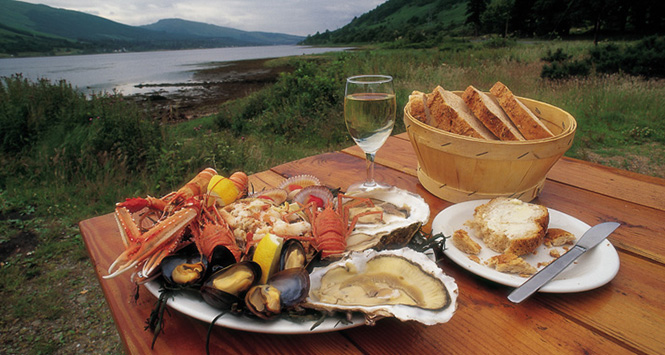The opportunity to drive footfall that comes with being an independent forecourt retailer is proving to be a tempting offer for many local retailers despite huge competition, prompting SLR to take a look at what’s out there.
by Kevin Scott
Forecourt businesses more than any other part of the convenience sector have had to adapt to the aggressive expansion of supermarkets, and this has seen an increasing presence of symbol stores in the forecourt sector.
For forecourt retailers this means the opportunity to work with a symbol group to improve their offer and with companies like Nisa and Spar now offering own-brand fuel offerings, the symbols look more tightly linked to the sector.
Raj Krishan, Retail Development Director at Nisa says that he views the forecourt sector as an area of great opportunity for its operators and one in which Nisa has developed a strong package that enables Nisa forecourt retailers to be competitive in the market place.
Earlier this year, Nisa became the first symbol group in the UK to have its own brand fuel offering, after it reached an agreement with leading fuel supplier Greenergy. This enables Nisa to provide its members with a transparent, competitive fuel offer which allows them to compete in a very price conscious marketplace. Nisa has developed an own brand fuel offer and branding on pole signs and canopies, which allow the Nisa brand to flow from the forecourt into the store without any dilution or confusion to the shopper.
Krishan says: “We’ve undertaken extensive research on understanding the forecourt consumer and shopper missions they make and has updated its offer to reflect the different shoppers in forecourt stores. The research found that there is not a one size fits all approach when it comes to forecourts and that each store needs to be tailored to suit shopper needs. It also highlighted three clear segments within the forecourt market – Transient, Convenience and Essentials.”
He cites transient shoppers as those who visit purely to stock up on fuel and food to go, while convenience shoppers use the store as a convenience store first and foremost that sells fuel, and finally Essentials shoppers visit the forecourt for both fuel and a convenience store. Krishan says: “Each of these segments has a different consumer base and therefore retailers should adjust their offer to match this, for example some forecourts will have more of a demand for food to go and impulse products whereas others will be required to stock more traditional ranges for shoppers looking to top up their grocery shopping.”
So, what’s clear is that Nisa is targeting the forecourt sector, adapting existing forecourt stores as well as driving recruitment in this area. Krishan adds: “The package we can offer forecourt stores can add real value, which includes an extensive range of products, regular promotions, in store marketing and PoS material and a large support team to assist with training and offer advice. Many existing members that have already taken on board advice and services provided by Nisa following the research have seen double digit growth since developing their offering and in the coming year this will be rolled out to further stores within Nisa membership.”
One company looking to expand into the forecourt sector is Bestway, operator of the Best-one fascia and James Hall, Group Director of Symbol, Bestway. He says: “The trend towards symbol retailing across the convenience sector will also shape future success on the forecourts. Symbol retailing is the way forward on the forecourt, too. With ever decreasing fuel margins retailers are rightly looking to drive profitability through the shop. Those who get the offer right can boost loyalty, basket spend and turnover.”
Hall says that shoppers are looking for quick answers; for what they want to eat and drink in the next hour, for dinner that evening, and the staples for tomorrow morning. “Ultimately they want their lives to be made easier and that puts forecourts in a very strong position.”
However Hall adds that this provides forecourt retailers with something of a paradox: as the nation tightens its collective purse strings, the demand for consistent quality and value are growing. “Traditionally, the forecourt is not widely perceived as offering value for money,” says Hall. “This is where the importance of working with the right symbol group comes in. It’s about much more than simply fascia and promotions. A good symbol group invests in its members to help them meet the changing face of convenience. It’s just as important on the forecourt as in the high street. Now more than ever, forecourt retailers must have the right mix so that every square foot of the shop works as hard as it can for them.”
Hall says that progressive retailers can capitalise on the changing ways in which shoppers are using their forecourt, engender loyalty and boost basket spend and turnover. “As with the wider convenience sector, food-to-go and hot drinks represent huge potential,” he says. “This must be coupled with strong value propositions and excellent levels of customer service.”
Food to go opportunity
While the top-up shoppers is increasingly being lured into forecourts, it is arguably the food to go offer that can make a real success of forecourts. And one way to extend that offer is with a franchise. Subway is one such company offering that very opportunity. The company highlights the dual branding opportunities that come with a franshise, adding that the outlets are efficient, convenient and provide a quick service, which draws a steady flow of customers – creating energy and a beneficial atmosphere.
Trevor Haynes, Development Manager for the Subway brand, UK and Ireland, comments: “Partnering with the Subway brand offers numerous advantages including increased footfall and sales and excellent business growth opportunities. Food-to-go operations work well within forecourts, in particular the Subway brand with its simplicity of operation and adaptable approach fits well within forecourt layouts and encourages more traffic to the forecourt.”
Haynes claims that Subway franchises can be quickly integrated into forecourts with great success. He adds: “The collaborative approach that the Subway brand takes, delivers real benefits for companies, including increased footfall and sales and excellent business growth opportunities.”
Wetstock management on the web
Wetstock management company Fairbanks has launched a new website at www.fairbanksglobal.com.
The new website has been designed to give everyone that visits a valuable and informative experience, providing an overview of the many great features of Fairbanks wetstock management by making all Fairbanks service brochures available, keeping customers up to date with both Fairbanks and general industry news as well as, crucially, providing the portal to the intuitive web platform that Fairbanks provides all of its customers, enabling them to manage wetstock, HSE responsibilities and even logistics from anywhere in the world.
The petrol retailing industry is extremely fast paced and in order to succeed you have to keep up, this means that suppliers can’t expect customers to be able to wait until they can sit down at a computer to access a company’s website when they need information quickly. As a result we now live in the world of the smartphone, creating a unique market that must be catered for. The Fairbanks website has been created using responsive design programming, in practice this means that the website will identify the size of the screen that you are viewing it on and respond accordingly, literally rearranging the website to fit. This solution is a huge improvement on the traditional method of reducing the size of the website which often results in text too small to read. This means that regardless of what device a customer uses all of the information they need will be readily accessible, making it a quick and convenient visit.
Fairbanks has created its new website by focussing on the needs of the customer, developing an informative and intelligent experience demonstrating once again their commitment to providing new innovations for its customers and be the provider of choice for world class wetstock management services.
Fresh sales success
Household company 151 Products has created a collection of Gerbera-style flower air fresheners to brighten and freshen-up the car. The company says the floral-inspired range, called Flower Power, and with an rrp of £1, has been launched to offer retailers, including forecourts, the chance to provide their customers an alternative to the traditional-styled car air freshener products.
Developed in-house, the Flower Power car air freshener has an air vent clip for the consumer to use in the car. The air fresheners are available in a range of four scents, including: blossom breeze; lemon and mandarin; tropical lily; and ylang ylang, and morning dew.
Richard Shonn, Managing Director of 151 Products, said: “Price point still remains a key buying decision, especially with items that are made as an impulse purchase. The Flower Power range will allow retailers to offer their customers a design-led and visually appealing alternative to other, more expensive car air fresheners, without compromising on the quality.”
Walter claims a hat-trick
In Scotland, one retailer stands out as an exceptional forecourt retailer. Walter Bryson, who manages the Londis-backed David Bryson & Son in Prestwick, has just claimed the Forecourt Retailer of the Year title at the SLR Awards for the third successive year – and in that incredible run he’s also become the first (and, to date, only) forecourt retailer to have been named Scottish Local Retailer of the Year.
Walter’s store is a masterclass is local retailing and he works closely with Londis to make continual improvements to his range.
Walter was ahead of the game when he began to focus on fresh food and as such has become a destination store, not just for fuel shoppers, but for those buying a meal for tonight, or top of shoppers. Working closely with local suppliers has also helped Walter in this regard.
His store shows that by harnessing the footfall of fuel shoppers and combining that with a truly outstanding convenience offering that attracts customers on foot, you can have the best of both worlds.







